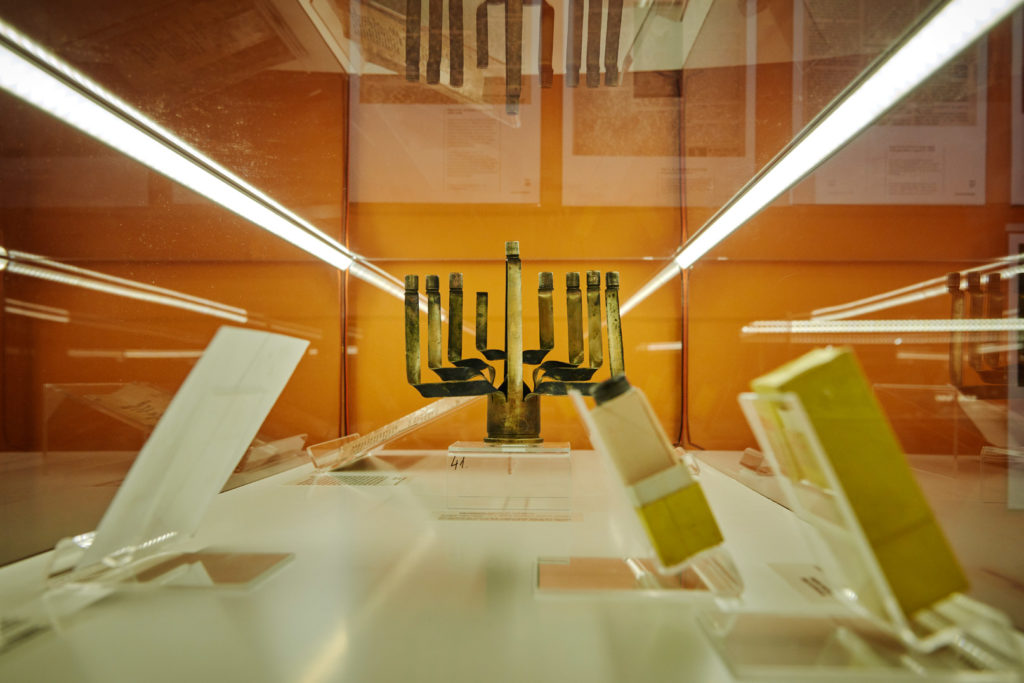Aidan Dunne: Hungarian Game of Thrones and meditations on maps
Szabolcs KissPál’s From Fake Mountains to Faith (Hungarian Trilogy)is a museum-scale exhibition ingeniously slotted into the modest enough space of the Project’s gallery. It consists primarily of extensive museological displays, liberally dispersed throughout the room, punctuated by a central, temporary wall incorporating two projection screens. The museum display is one strand of the trilogy, the projected videos the other two.
All address the emergence and development of an Hungarian national – and nationalist – mythology. If you are not familiar with the history and character of Hungary as a political entity from the 19th century to the current moment, KissPál’s trilogy is an intense crash course in certain crucial aspects, delivered with fantastic attention to telling detail from an incisively critical perspective. One note of caution, though: the videos are termed docu-fictions, and the displays make up a fictitious museum.
Fighting fire with fire, KissPál anatomises the calculated construction of what he sees as an essentially fictional narrative of identity with counter-fictional means. He has a personal stake in this game of thrones, having been born and raised as part of the Hungarian-speaking minority in multi-ethnic Transylvania, Romania (he is long settled back in Hungary). KissPál’s birthplace, Marosvásárhely, to use its Hungarian name, was part of roughly two-thirds of its territory that Hungary lost as a result of the post-first World War Trianon Treaty in 1920.
A great deal of the substance of the museum exhibits and documentary footage deal with the subsequent, revisionist interpretations of the treaty and its legacy – a tragic legacy, in the eyes of the Hungarian conservative right. The trauma of defeat spurred the scapegoating of backstabbing Bolsheviks and, interchangeably, Jews, and nurtured the bitter myth of being robbed of a rightful homeland. In his meticulous labelling and his video commentaries, KissPál skilfully teases out how these utterly unfounded grievances and fanciful, romanticised histories, fanned by the flames of ominous developments in Europe, flared into anti-Semitism and other destructive prejudices and obsessions.
The Trianon complex is all too evident in the recent negative drift in Hungarian politics, not least in facilitating the encouragement of fanciful dreams of origin and identity. In KissPál’s reading, another is the related phenomenon of Turanism, a “political religion” promoting the common cause of a diverse, linguistically related group of peoples of Inner and Central Asian origin, which flourished in the latter 19th and early 20th centuries and has seen a recent, alarming revival. KissPál traces the fortunes of Hungary’s totem bird, the Turul, a mythological creature thought to be inspired by a Central Asian hunting bird, in national iconography. It gained a new lease of life post-Trianon and, latterly, it has been pressed into symbolic service in the promotion of a populist Hungarian nationalism, to the extent that Prime Minister Viktor Orbán described the bird as “an archetype of the Hungarian people,” belonging to “blood and motherland”.
It is to KissPál’s great credit that, as an exile for much of his life, he clearly has not been drawn into a sentimental identification with a nostalgically nationalist vision of Hungary. In fact, as he sees it, his minority position in Romania lent him a useful detachment from which to view the “objectification and instrumentation” of his own identity on the part of the Hungarian political establishment in the construction of a new, decidedly illiberal nationalism.
And, as this show demonstrates (not without relevance to Ireland and Brexit Britain), equipped him to be alert to the flaws and problems attendant on “identity formation . . . and . . . the construction of national identity.” As witness Masha Gessen recent response to an interviewer’s assertion that Russians were very interested in their own history. They are not, she insisted, they are interested in the historical myth. Myth is simple, reality is complex.
more: Irish Times, 2017.12.12.
